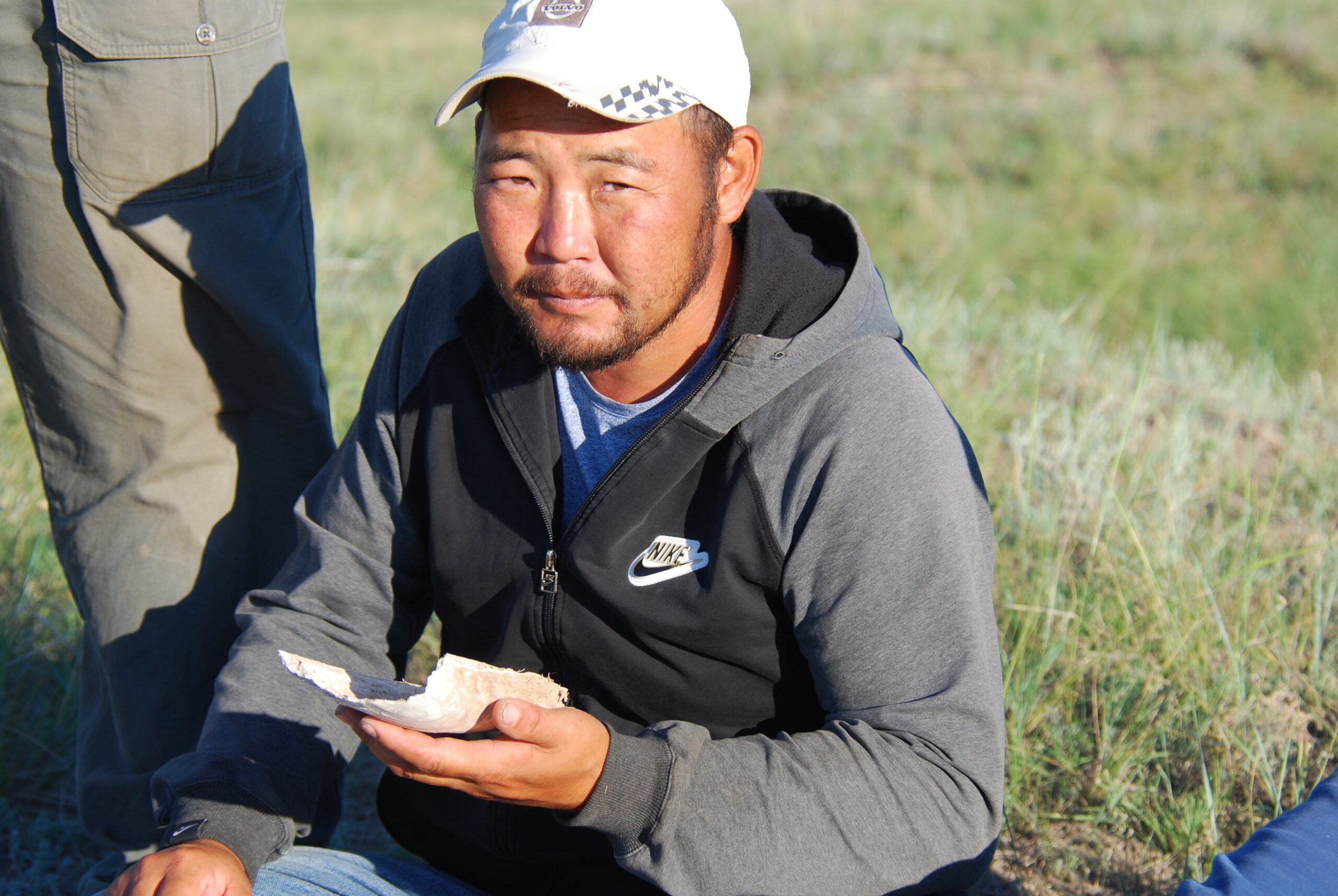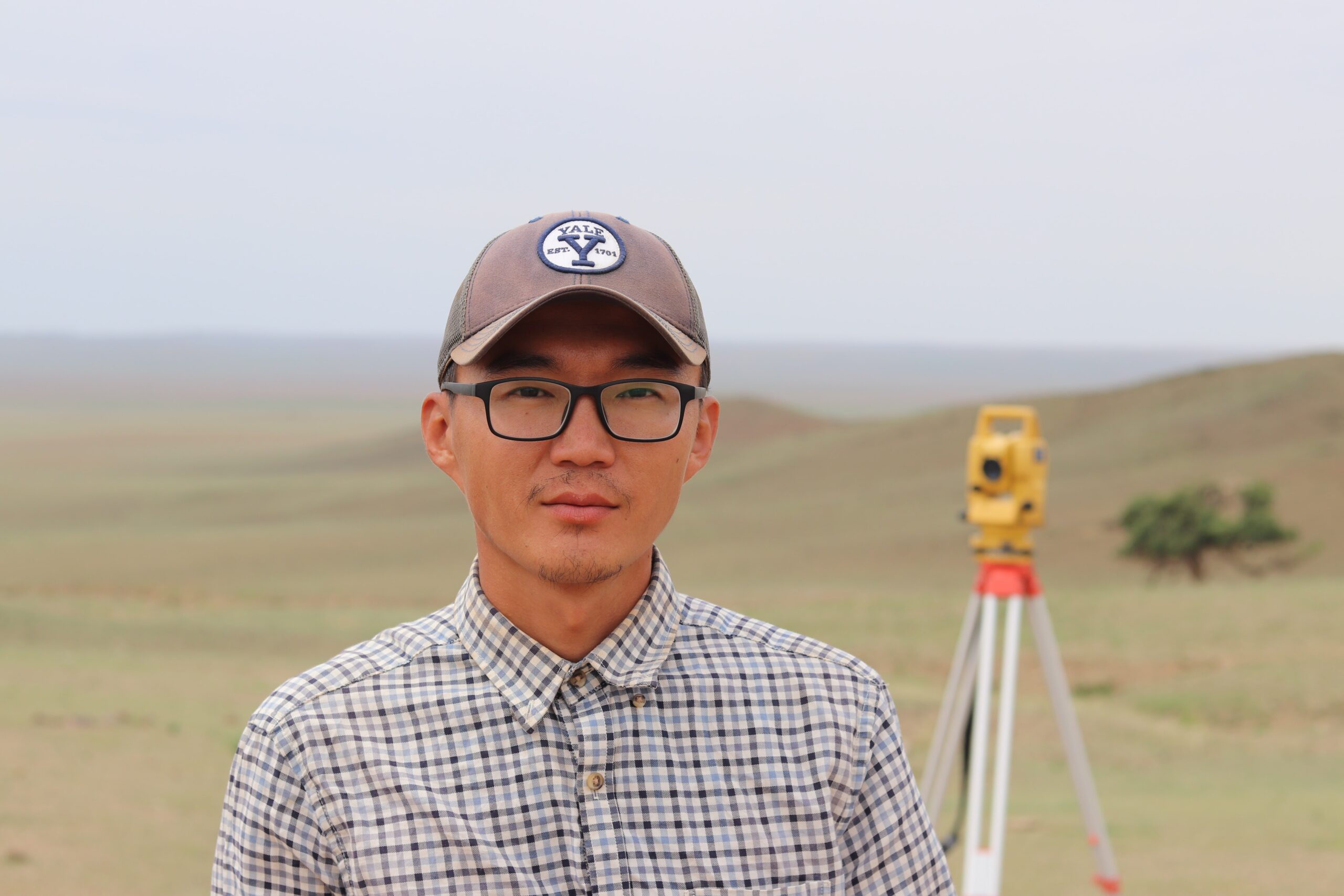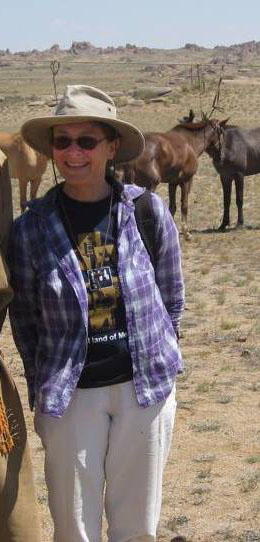Gobi-Steppe
Neolithic
Since 2013, we have visited, surveyed, mapped, and excavated Palaeolithic, Neolithic, and Bronze Age archaeological sites in eastern Mongolia, with a primary interest in the Neolithic and the Bronze Age transition.
About
Gobi-Steppe Neolithic
Since 2013, we have visited, surveyed, mapped, and excavated Palaeolithic, Neolithic, and Bronze Age archaeological sites in eastern Mongolia, with a primary interest in the Neolithic and the Bronze Age transition.
About Us
The Gobi-Steppe Neolithic started in 2013 with the partnership of Odsuren, Bukhchuluun, Lisa, and Chinzorig. Asa joined us in 2017. We share a mutual interest in Gobi Desert archaeology, the wish to understand how humans in the past lived, and the desire to highlight the global importance of Mongolian archaeology. Since 2013, we have visited, surveyed, mapped, and excavated Palaeolithic, Neolithic, and Bronze Age archaeological sites in eastern Mongolia, with a primary interest in the Neolithic and the Bronze Age transition. We have welcomed many new collaborators who have added technical expertise and creative insight, and remain dedicated both to providing research opportunities for new researchers and collaborating with some of the top archaeologists in the field.
GSN Team

Davaakhuu Odsuren
Professor at Mongolian State University of Education
Davaakhuu Odsuren is Professor at Mongolian State University of Education, and a researcher with the Institute of Archaeology, Mongolian Academy of Sciences. He has been conducting fieldwork on international expeditions in Mongolia since 2004, working with Russian, American, and Japanese teams. His primary area of training is in stone tool analysis and is the leading expert in the Mongolian Neolithic period, surveying and excavating many old and new sites. He is interested in lithic production technology and understanding Neolithic habitation patterns of southern and eastern Mongolia.
Bukhchuluun Dashzeveg
PhD Candidate at Yale University
Bukhchuluun Dashzeveg is a PhD Candidate at Yale University, and a researcher with the Institute of Archaeology, Mongolian Academy of Sciences. He has worked on many international and local rescue excavations since 2007 and has worked on some of the most important Bronze Age cemetery sites in Eastern Mongolia and co-directs the Shiriin Chuluu project with Asa Cameron. He leads our survey and mapping work. His research focuses on mortuary practice and social dimensions of early nomadic pastoralists in the Gobi desert.


Lisa Janz
Assistant Professor of Archaeology at the University of Toronto Scarborough
Lisa Janz is Assistant Professor of Archaeology at the University of Toronto Scarborough. She has been working in East Asia since 2002 and in Mongolia since 2004. Her primary areas of training are in the lithic and zooarchaeological analyses. She is interested in how climate change affects humans and their environments, and the impact that those changes have on cultural trajectories – like how domesticates are adopted by hunter-gatherers.
Chinzorig Battumur
Client Logistics Coordinator at Custom Aware LLC Mongolia
Chinzorig Battumur is Client Logistics Coordinator at Custom Aware LLC Mongolia, and has a degree in construction engineering from the Mongolian University of Science and Technology and studied German Studies in Germany. He is our logistics expert and camp manager, specializing in strategic expeditionary development. He also serves as a senior expert of transportation of GSN.


Asa Cameron
PhD Candidate at Yale University
Asa Cameron is a PhD Candidate at Yale University. He has been involved in Cultural Resource Management (CRM) across the northeastern and southeastern United States since 2013 and has participated in archaeological research in Eurasia since 2010, including Mongolia, Kazakhstan, and Italy. His primary areas of training are in archaeological chemistry and zooarchaeology, including work on geochemical sourcing carnelian beads and examining ancient herd management practices through stable and radiogenic isotope analysis. He co-directs the Shiriin Chuluu project with Bukhchuluun Dashzeveg.
Our Collaborators

William (Bill) Fox
William (Bill) Fox has conducted geoarchaeology research for fifty years throughout North America, portions of western and southern Europe, and most recently, in Mongolia. Field work has been most extensive in Ontario, locating specific chert, metasediment toolstone and paintstone sources, while defining past Indigenous distribution networks using geochemistry and petrographic techniques. An extensive lithic reference collection has been established at Trent University, focused on Northeastern North America, and smaller collections assembled for southwestern Cyprus and eastern Mongolia.
Arlene Rosen
Professor of Environmental Archaeology at the University of Texas, Austin
Professor of Environmental Archaeology at the University of Texas, Austin
Arlene Rosen is a Professor of Environmental Archaeology at the University of Texas, Austin and a world-renowned specialist in geoarchaeology and microbotany. She has worked for nearly 40 years as geoarchaeologist on excavations in Israel, Turkey, and New Mexico and co-directs an NSF-supported research project at Ikh Nart, just west of Zaraa uul. She has worked with the Gobi-Steppe Neolithic project since 2016, studying palaeolandscapes through geomorphology, sediment analysis, palaeohydrology, and phytoliths.


Paul Szpak
Associate Professor and Canada Research Chair
in the Department of Anthropology at Trent University
Associate Professor and Canada Research Chair in the Department of Anthropology at Trent University
Paul Szpak is an Associate Professor and Canada Research Chair in the Department of Anthropology at Trent University. He is an archaeological scientist specializing in the use of chemical techniques to analyze organic materials such as animal and plant remains from archaeological sites. He is interested in understanding how the relationships among humans, animals, and plants have changed over time.
Angela Evoy
Adjunct Professor of Anthropology, Department of Social and Behavioral Sciences,
Cosumnes River College in Sacramento
Angela Evoy is a Adjunct Professor of Anthropology in the Department of Social and Behavioral Sciences at Cosumnes River College in Sacramento. She specializes in stable isotope and usewear analysis in East Asia and California. Her 2019 MA thesis (Trent University) used microscopic and experimental approaches in the functional analysis of ground and chipped adzes and axes from the Gobi Desert, identifying region-wide trends in technological change, taphonomic factors affecting the preservation of usewear in the Gobi Desert, and evidence for woodworking among desert hunter-gatherers.


Laure Dubreuil
Associate Professor of Anthropology at Trent University
Laure Dubreuil is Associate Professor of Anthropology at Trent University. She is a leading expert in usewear analysis and experimental archaeology, with an emphasis on Southwest Asia and Europe. Her current program of research looks at dietary shifts in plant use in the Epipalaeolithic and Neolithic periods, as well as ritual discard of milling stones. Work on our project involves microscopic and experimental approaches to usewear on ground stone and flint tools, as well as bead production.
Jennifer Routledge
PhD student at Trent University
Jennifer Routledge is a PhD student at Trent University in Peterborough, Ontario Canada. She has been affiliated with the Trent Environmental Archaeology Laboratory since 2018. Jennifer’s research employs stable isotope analysis, to a variety of substrates, in the reconstruction of past environments and animal ecology. Jen’s projects have involved methodological studies as well as examination of Arctic and steppe ecology. For her Master’s thesis project Jen analysed the carbon, nitrogen and oxygen isotopic compositions of Asian ostrich eggshell, obtained from the Eurasian steppe, to gain insight into the environmental limitations of this now extinct species.


Moses Akogun
PhD student at the University of Toronto
Moses Akogun is a zooarchaeologist and PhD student at the University of Toronto. He uses osteological and chemical methods, especially isotope analysis and Zooarchaeology by Mass Spectrometry (ZooMS), to understand human-animal-environment interactions during the Pleistocene and Holocene. He is currently collaborating on the GSN project with Dr. Davaakhuu Odsuren and Dr. Lisa Janz for his doctoral thesis. This research assesses early evidence for human management of large herds, particularly cattle and horses, during the early Neolithic in Mongolia.
Charlie Littler
M.Sc. Student at the University of Toronto
Charlie Littler-Klein is an M.Sc. Student at the University of Toronto. She specializes in Zooarchaeology and Geometric Morphometrics. Her master’s research focuses on a morphometric analysis of Aurochs phalanxes from Tamsagbulag. Charlie’s research aims to better understand how people at Tamsagbulag were interacting with, and possibly managing wild Aurochs herds.


Jean-Philippe Lambert
B.A. in Archaeology and East Asian Studies from the University of Toronto
Jean-Philippe has a Bachelor of Arts in Archaeology and East Asian Studies from the University of Toronto and is currently applying to continue archaeological research as a Master’s student. His current focus is primarily on zooarchaeological analysis, resource intensification and landscape archaeology.
